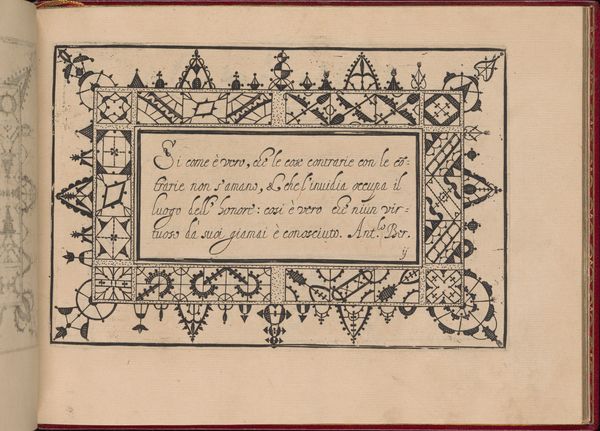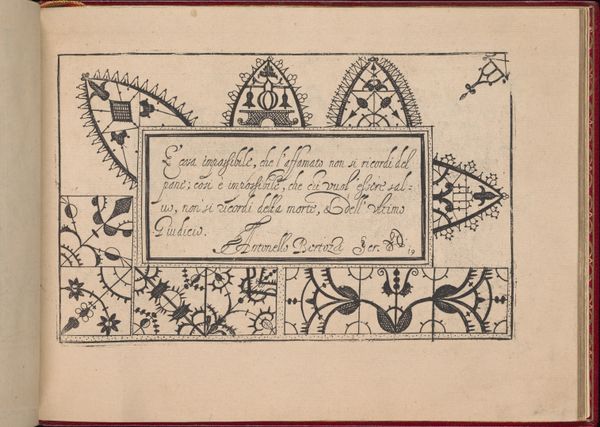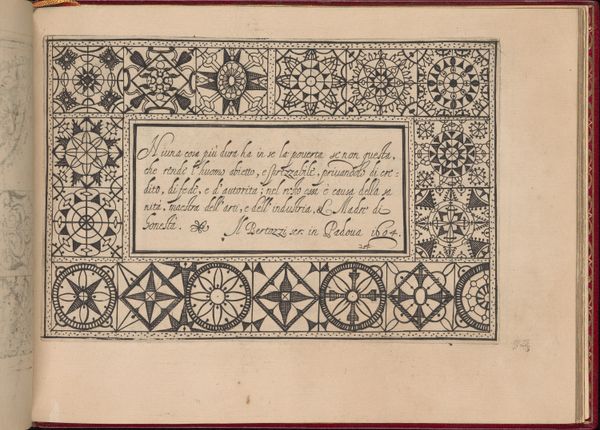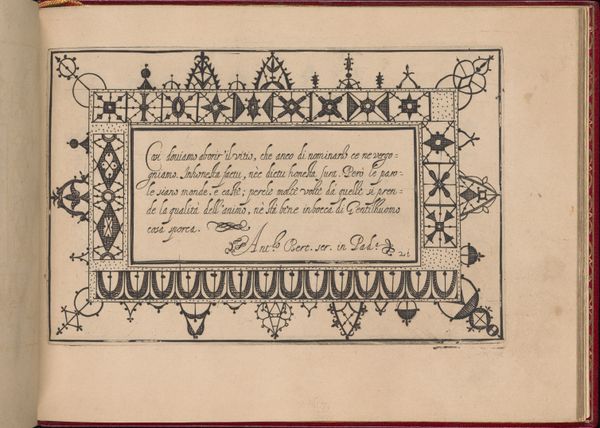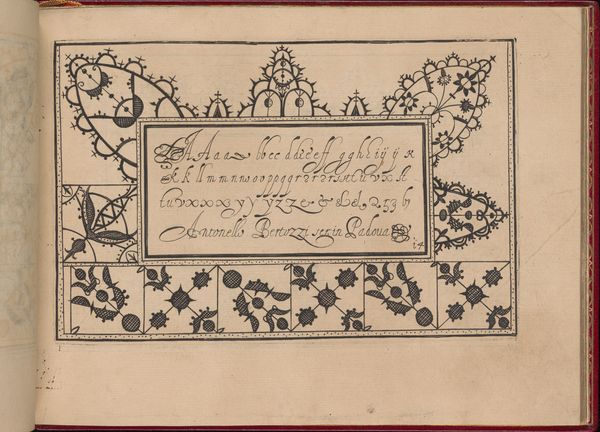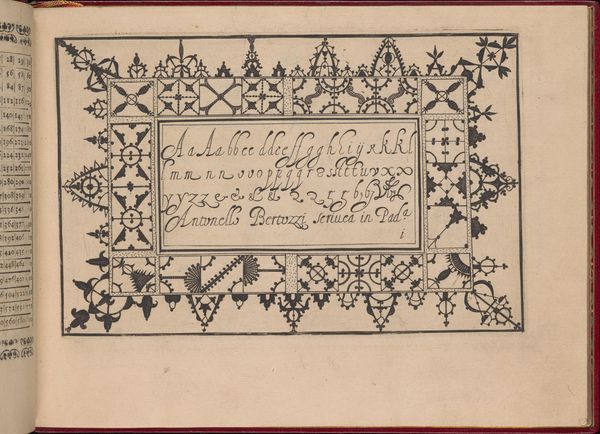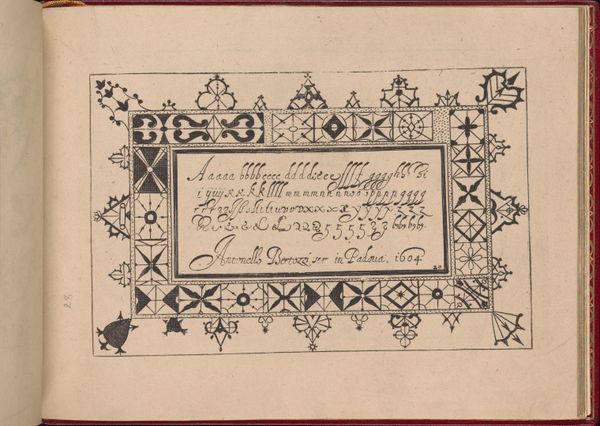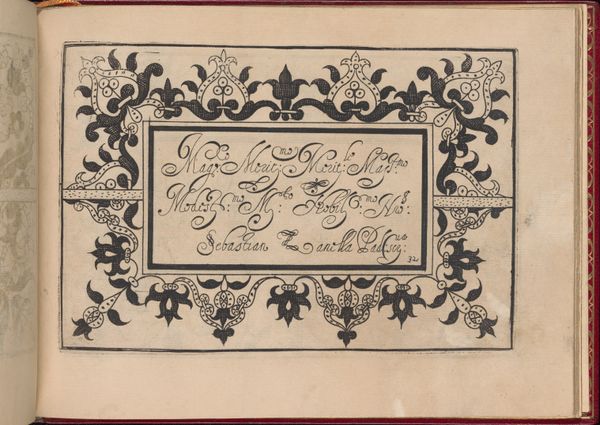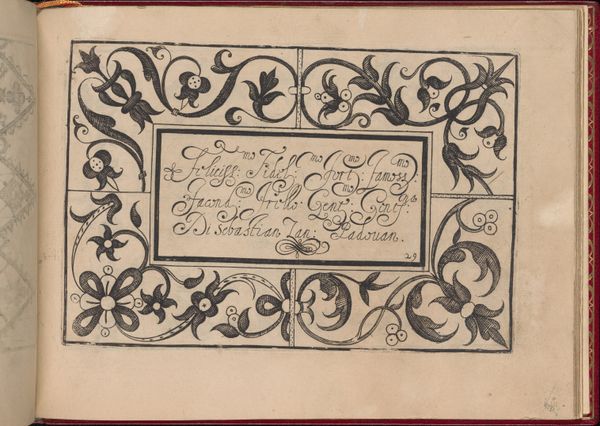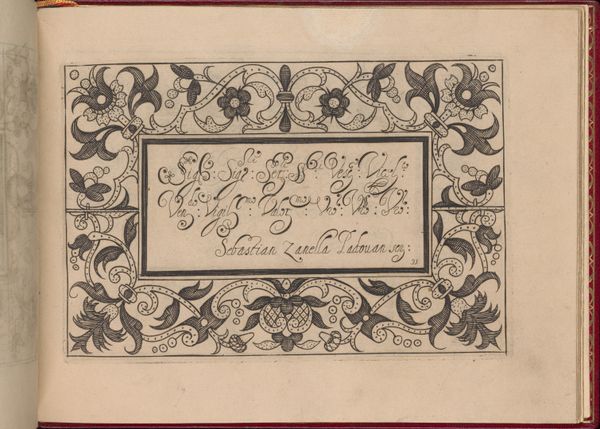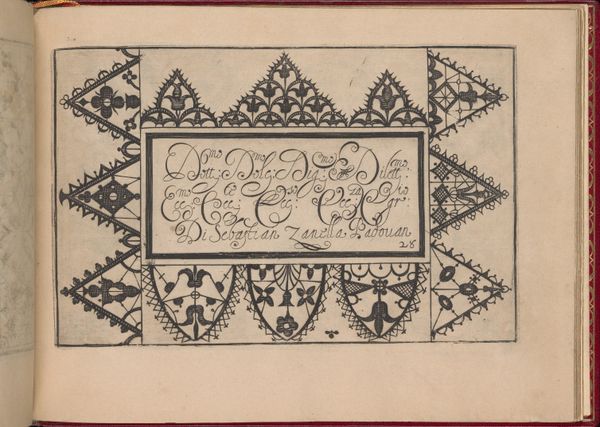
Ghirlanda: Di sei vaghi fiori scielti da piu famosi Giardini d'Italia, page 24 (recto) 1604
0:00
0:00
drawing, ornament, print, ink
#
drawing
#
ornament
# print
#
book
#
11_renaissance
#
ink
#
geometric
#
calligraphy
Dimensions: Overall: 5 7/8 x 7 7/8 in. (15 x 20 cm)
Copyright: Public Domain
Curator: Look at this marvel! It's a page from Pietro Paulo Tozzi's "Ghirlanda: Di sei vaghi fiori scielti da piu famosi Giardini d'Italia," dating back to 1604. It is a page of the book realized as a print with ink on paper, currently held in the Metropolitan Museum. What strikes you first about this particular page? Editor: Oh, my initial feeling is an odd combination of stern geometry meeting the ephemeral, something about the patterns feels strict, while others dance lightly, perhaps reflecting something deeper about constraints. Curator: The geometric aspects are particularly compelling, right? The way they create rhythm around the calligraphic elements suggests that math is a part of the creative act. How do you relate to this combination of writing, shape, and symbol? Editor: Absolutely. Seeing those symmetrical forms—circles bursting like stars—alongside cursive calligraphy brings so much together. Also, as someone sensitive to what lies beneath what we see, I want to unpack the language of flowers—especially with gardens mentioned right in the title. I see echoes of how marginalized communities code messages to the wider world via symbolism of this kind. Curator: That's a lovely idea, about using symbols for protection! This book offered templates to needle workers, as the patterns have connections to weaving and lace-making. The book suggests ways for one to make one's own personal and precious version. Is it, perhaps, a way to offer a means of empowerment? Editor: That’s a crucial point! Tozzi offering patterns as seeds of creative freedom subverts constraints within domestic spaces traditionally policed by gender norms and social hierarchies. These designs, literally "in hand," offer quiet yet firm statements, making daily craft an assertion of the self. Curator: Beautifully put! For me, encountering this drawing prompts a renewed respect for these delicate whispers from the past, now emboldened by our attentive listening and awareness. Editor: Yes, by allowing such beautiful old voices a place in modern conversations we honor those who came before us! I feel empowered in that thought, grateful for new insights.
Comments
No comments
Be the first to comment and join the conversation on the ultimate creative platform.
